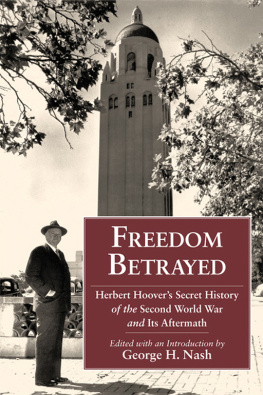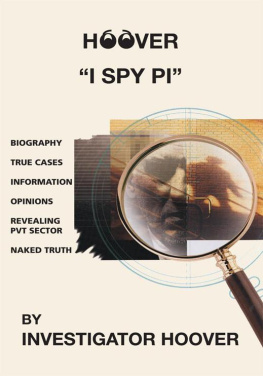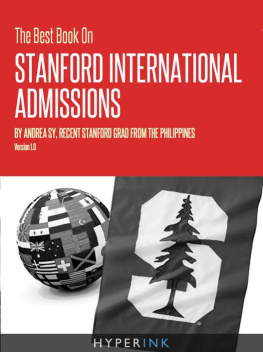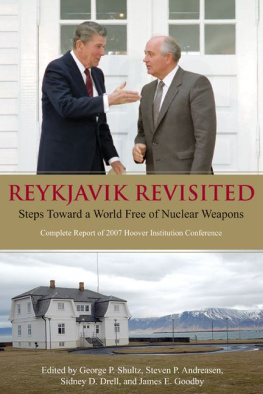George H. Nash - Herbert Hoover and Stanford University
Here you can read online George H. Nash - Herbert Hoover and Stanford University full text of the book (entire story) in english for free. Download pdf and epub, get meaning, cover and reviews about this ebook. year: 2015, publisher: Hoover Institution Press, genre: Detective and thriller. Description of the work, (preface) as well as reviews are available. Best literature library LitArk.com created for fans of good reading and offers a wide selection of genres:
Romance novel
Science fiction
Adventure
Detective
Science
History
Home and family
Prose
Art
Politics
Computer
Non-fiction
Religion
Business
Children
Humor
Choose a favorite category and find really read worthwhile books. Enjoy immersion in the world of imagination, feel the emotions of the characters or learn something new for yourself, make an fascinating discovery.
- Book:Herbert Hoover and Stanford University
- Author:
- Publisher:Hoover Institution Press
- Genre:
- Year:2015
- Rating:5 / 5
- Favourites:Add to favourites
- Your mark:
- 100
- 1
- 2
- 3
- 4
- 5
Herbert Hoover and Stanford University: summary, description and annotation
We offer to read an annotation, description, summary or preface (depends on what the author of the book "Herbert Hoover and Stanford University" wrote himself). If you haven't found the necessary information about the book — write in the comments, we will try to find it.
Herbert Hoover and Stanford University — read online for free the complete book (whole text) full work
Below is the text of the book, divided by pages. System saving the place of the last page read, allows you to conveniently read the book "Herbert Hoover and Stanford University" online for free, without having to search again every time where you left off. Put a bookmark, and you can go to the page where you finished reading at any time.
Font size:
Interval:
Bookmark:

The Hoover Institution on War, Revolution and Peace, founded at Stanford University in 1919 by the late President Herbert Hoover, is an interdisciplinary research center for advanced study on domestic and international affairs in the twentieth century. The views expressed in its publications are entirely those of the authors and do not necessarily reflect the views of the staff, officers, or Board of Overseers of the Hoover Institution.
Hoover Press Publication 369
Copyright 1988 by George H. Nash
All rights reserved. No part of this publication may be reproduced, stored in a retrieval system, or transmitted in any form or by any means, electronic, mechanical, photocopying, recording, or otherwise, without written permission of the publisher. First printing, 1988
Manufactured in the United States of America
05 04 03 02 01 00 99 98 08 07 06 05 04 03 02
Incorporated into this work are chapters 3 and 25 of the authors The Life of Herbert Hoover: The Engineer, 18741914 (New York: W. W. Norton, 1983). Reprinted by permission of the publisher. Photographs courtesy of the Hoover Institution Archives (HIA) and the Herbert Hoover Presidential Library (NLH).
Cover illustration of Herbert Hoover by Barbara Mendebohn, Stanford University News and Publications Service.
Library of Congress Cataloging in Publication Data
Nash, George H., 1945
Herbert Hoover and Stanford University.
Bibliography: p.
1. Hoover, Herbert, 18741964 Contributions in higher education. 2. Stanford University History.
I. Title.
E802.N367 1988 378.79473 8729716
ISBN 0-8179-8691-X
ISBN 0-8179-8692-8 (pbk.)
To Charles and Miriam Palm
Herbert Hoover was many things at many timesengineer, food relief worker, President, author, and statesmanbut through it all there existed a strong relationship between the man and his alma mater. From the time he took a train from Oregon to Palo Alto in 1891 until his death in 1964, Herbert Hoover and Stanford University grew up together; on each is the mark of the other. It is most fitting that George Nash, the man who has undertaken the exciting but exhausting task of writing the definitive Hoover biography, has written the story of that relationship.
As strong as it would become, the relationship began humbly. Mr. Hoover, who had failed the entrance exam on his first try and was admitted only on the condition that he become proficient in English, was among the youngest students in his class. An orphan, he was neither wealthy nor distinguished. But his strength of will, as a Stanford mathematics professor termed it, took control of him and of his life. It would not be long before he was off and running in the changing and challenging world of the twentieth century.
Much would change in his life, but whether he was in the outback of Australia, the war-torn countryside of Western Europe, the White House, or the New York hotel suite where he spent many of his later years, Mr. Hoover stayed close to his alma mater. Stanford University, as Dr. Nash points out, had given Herbert Hoover a chance. He never forgot that.
Over the years, Herbert Hoover would bring to Stanford many of the buildings and institutions for which it is today so well known. For the Hoover Institution on War, Revolution and Peace, the Student Union, the Food Research Institute, the Lou Henry Hoover House, and the Graduate School of Business, he was directly responsible. Through his efforts, the Stanford Medical School remained a part of the university. But perhaps his greatest gift to Stanford was the personal interest Mr. Hoover took in it.
The relationship between Mr. Hoover and his university, however, was not always comfortable. In fact, when Mr. Hoover pled with the international community to rescue German-occupied Europe from famine in the midst of World War II, the same Stanford Food Research Institute that he had persuaded the Carnegie Corporation to create as a contribution to feeding the hungry claimed there was no famine. He fought regularly with the Board of Trustees and often found fault in the directions taken and decisions made at the university.
In the end, however, Stanford University was Herbert Hoovers alma mater. It was his parent, his child, and his friend. In that context, criticism and even disappointment could come naturally without threatening the ties that bound them together. In Herbert Hoover and Stanford University, Dr. Nash captures that remarkable relationship with skill and grace. As a Stanford alum and a great fan of Mr. Hoover, I am grateful to Dr. Nash for his contribution.
At Mr. Hoovers commencement, Stanford president David Starr Jordan told the graduating class that men and women are judged by achievement, not by dreams. Shortly after World War I, Mr. Hoover himself wrote to a friend: There is little importance to mens lives except the accomplishments they leave to posterity. More than anyone except Leland and Jane Stanford themselves, Herbert Hoover helped shape Stanford University into the excellent institution it is today. He did much for his country and indeed for the people of the world throughout his long life, but by his own standard and that of its first president, Stanford University now stands as perhaps the best proof of Mr. Hoovers enduring importance.
Mark O. Hatfield
United States Senator
In less than five years Stanford University will celebrate the centennial of its opening. As every Stanford graduate knows, among the 400 students who gathered in the California sunshine for the inaugural ceremonies on October 1, 1891 was an unassuming Iowa-born orphan named Herbert Hoover who later became President of the United States. Every Stanford graduate also knows that Hoover subsequently did much for the institution of higher learning that gave him the opportunity to transcend his humble origins and achieve success in life.
But few persons to this day realize the profound, abiding, and often hidden influence that Hoover exerted on the development of his alma mater. Not only was he Stanfords most honored alumnusan engineer, humanitarian, and statesman who lived a life of prodigious accomplishmenthe was also for several decades the most influential alumnus in the shaping of Stanfords own destiny. When Hoover died in 1964 at the age of 90, his life and that of his alma mater had intersected for nearly three-quarters of a century. He left behind a record of service to his university that was exceeded only by that of Leland and Jane Stanford themselves.
This volume tells that story. In some ways it is a classically American story of an impecunious youth who strove for a college education, attained it against the odds, did well in the world, and then resolved to do good. It is also the story of a brilliant and indefatigable institution-builder whose influence on his alma mater far exceeded the generous monetary contributions that he gave or was instrumental in obtaining.
Hoovers institutional legacy to Stanford, in fact, was manifold: the archive, library, and international research center that today bears his name; the Stanford Union of which he was rightly called the father; the Food Research Institute that he founded in 1921; the Business School whose creation he inspired and engineered in 1924; the magnificent house on San Juan Hill that has become the official home of Stanford presidents. Other benefactions were less visible. It is still little known, for instance, that Hoover played a crucial role in saving the Stanford Medical School from an early demise in 1914, that at least twice he rescued the university from a debilitating financial morass, that time and again he lent his enormous prestige to enhancing its coffers and its reputation, and that he as much as any other man was responsible for selecting four of Stanfords first five presidents. In a multitude of ways, then (and this list is not exhaustive), Hoover left an enduring imprint on his alma mater.
Next pageFont size:
Interval:
Bookmark:
Similar books «Herbert Hoover and Stanford University»
Look at similar books to Herbert Hoover and Stanford University. We have selected literature similar in name and meaning in the hope of providing readers with more options to find new, interesting, not yet read works.
Discussion, reviews of the book Herbert Hoover and Stanford University and just readers' own opinions. Leave your comments, write what you think about the work, its meaning or the main characters. Specify what exactly you liked and what you didn't like, and why you think so.










